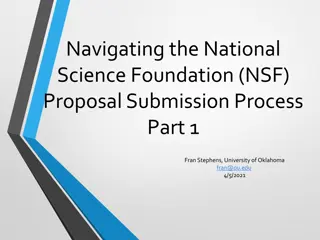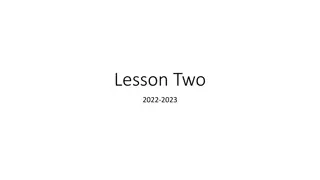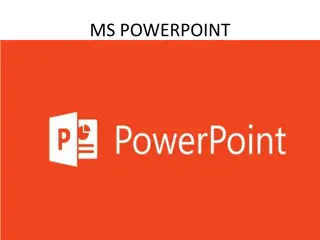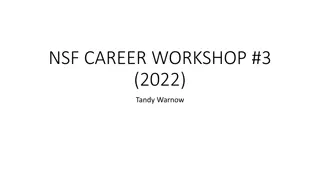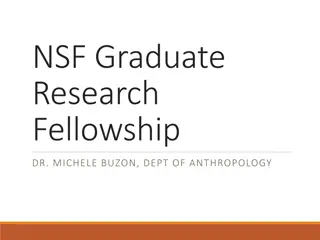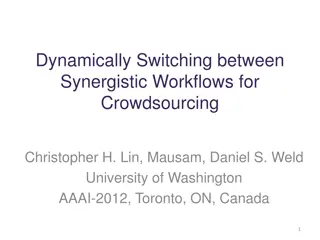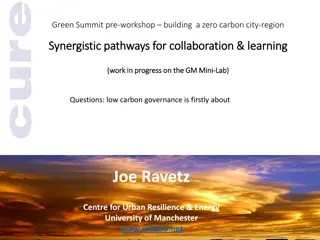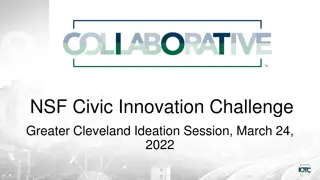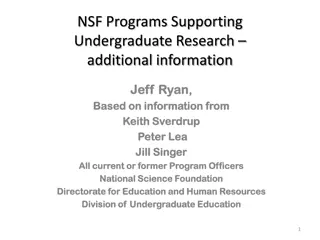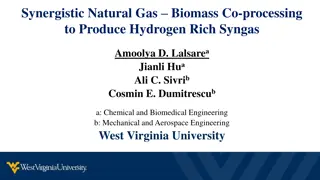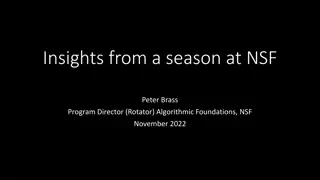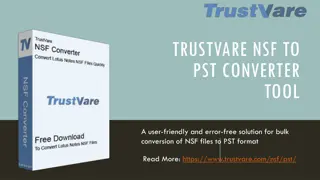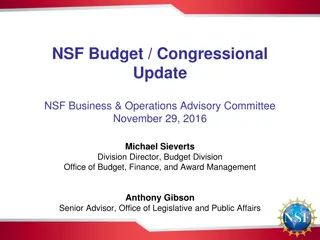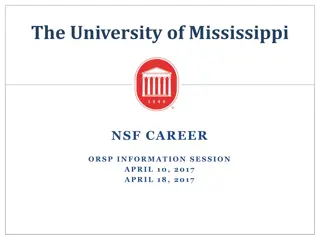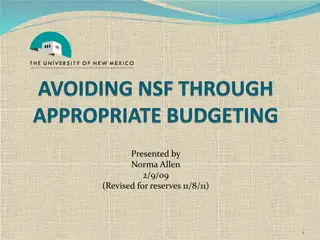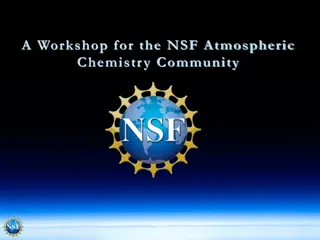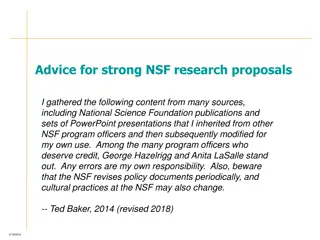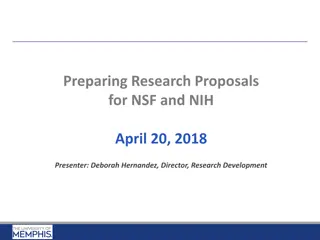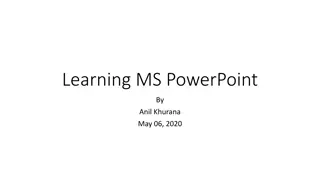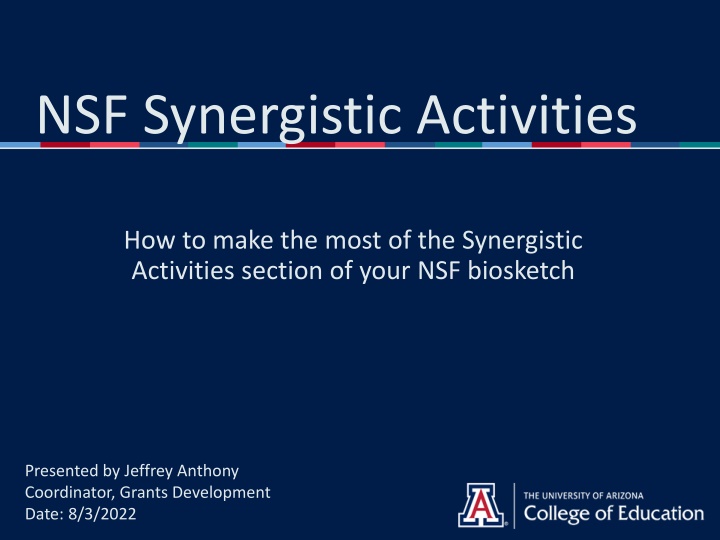
Making the Most of NSF Synergistic Activities for Biosketch Enhancement
Learn how to optimize the Synergistic Activities section of your NSF biosketch to showcase the broader impact of your professional and scholarly endeavors. This guide, presented by Jeffrey Anthony, provides insights on building a compelling section, understanding NSF reviewers' considerations, and the critical elements considered in reviews. Discover how to demonstrate the integration, transfer, and creation of knowledge effectively.
Download Presentation

Please find below an Image/Link to download the presentation.
The content on the website is provided AS IS for your information and personal use only. It may not be sold, licensed, or shared on other websites without obtaining consent from the author. If you encounter any issues during the download, it is possible that the publisher has removed the file from their server.
You are allowed to download the files provided on this website for personal or commercial use, subject to the condition that they are used lawfully. All files are the property of their respective owners.
The content on the website is provided AS IS for your information and personal use only. It may not be sold, licensed, or shared on other websites without obtaining consent from the author.
E N D
Presentation Transcript
NSF Synergistic Activities How to make the most of the Synergistic Activities section of your NSF biosketch Presented by Jeffrey Anthony Coordinator, Grants Development Date: 8/3/2022
BUILDING YOUR SYNERGISTIC ACTIVITES SECTION FOR YOUR NSF BIOSKETCH Jeffrey Anthony Coordinator, Grants Development Contact: jeffreyanthony@arizona.edu
What Are Synergistic Activities FROM NSF 22-1 (THE PAPPG ) A list of up to five distinct examples that demonstrates the broader impact of the individual's professional and scholarly activities that focus on the integration and transfer of knowledge as well as its creation.
NSF Reviewers Considerations NSF Reviewers Considerations What the proposers want to do Why they want to do it How they plan to do it How they will know if they succeed What benefits could accrue if the project is successful
NSF Reviews Proposals for Two Criteria NSF Reviews Proposals for Two Criteria Broader Impacts: The Broader Impacts criterion encompasses the potential to benefit society and contribute to the achievement of specific, desired societal outcomes. Intellectual Merit: The Intellectual Merit criterion encompasses the potential to advance knowledge; and
NSF Elements Considered in Review and How Synergistic Activities Interact Advance knowledge and understanding within its own field or across different fields (Intellectual Merit); and What is the potential for the proposed activity to: Benefit society or advance desired societal outcomes (Broader Impacts)? To what extent do the proposed activities suggest and explore creative, original, or potentially transformative concepts? Is the plan for carrying out the proposed activities well-reasoned, well-organized, and based on a sound rationale? Does the plan incorporate a mechanism to assess success? How well qualified is the individual, team, or organization to conduct the proposed activities? Are there adequate resources available to the PI (either at the home organization or through collaborations) to carry out the proposed activities?
NSF Provided Examples Development and/or refinement of research tools Innovations in teaching and training Contributions to the science of learning Computation methodologies and algorithms for problem- solving Broadening the participation of groups underrepresented in STEM Development of databases to support research and education Service to the scientific and engineering community outside of the individual s immediate organization Equity, Diversity, Inclusion Other
What are Distinct Examples FROM NSF 22-1 (THE PAPPG ) A list of up to five distinct examples that demonstrates the broader impact of the individual's professional and scholarly activities that focus on the integration and transfer of knowledge as well as its creation.
Good Great! Developing an NSF funded DRL equity and interdisciplinary making in STEM education program; collaborating with researchers across 4 universities with specific emphasis on building capacity for research knowledge and dissemination of research related to making and equity, to improve STEM-focused maker participation. 2020-2024: Co-Principal Investigator, developing a Network to Coordinate Research on Equity Practices and Cultures in STEM Maker Education, National Science Foundation (NSF) ($499,985) Part of an NSF DRK-12 grant, developed a set of scalable, classroom- focused measures of usable mathematics teaching knowledge that are aligned with state standards to extend the classroom video analysis approach to inform researchers, policy makers, and school districts on how to monitor teacher knowledge over time, and to gauge teacher preparedness for implementing state standards in mathematics and enhance learning and teaching of STEM. Senior Researcher, National Science Foundation Grant, Developing and Validating a Scalable, Classroom-focused Measure of Usable Knowledge for Teaching Mathematics: The Classroom Video Analysis Instrument, (2017-2021) PI which Integrated NSF s Research Experiences for Undergraduates program with an existing NSF grant A Sleep Education Program to Improve STEM education in Elementary School to mentor undergraduate students in meaningful ways in conducting research to better understand and promote practices that increase students' motivations and capacities to pursue careers in fields of science, technology, engineering, or mathematics (STEM). Principal Investigator, Research Experiences for Undergraduates Supplemental for The Z-factor Program: A Data-Driven, Sleep Education Program to Improve STEM in Elementary School Students, sponsor: National Science Foundation As PI of NSF Conference Grant, designed a workshop bringing together a community of collaborators from multiple stakeholder groups to engage in activities that invite experimentation with distributed learning technologies to examine ways to adapt learning to the changing technological landscape and create robust, dynamic online STEM learning environments. 2018-2019: Principal Investigator, Synthesis and Design Workshop: Principles for the equitable design of digitally- distributed, studio-based STEM learning environments, National Science Foundation ($99,825)
Good Great! Developing an NSF funded DRL equity and interdisciplinary making in STEM education program; collaborating with researchers across 4 universities with specific emphasis on building capacity for research knowledge and dissemination of research related to making and equity, to improve STEM- focused maker participation. 2020-2024: Co-Principal Investigator, developing a Network to Coordinate Research on Equity Practices and Cultures in STEM Maker Education, National Science Foundation (NSF) ($499,985)
Tailor Your Biosketch For Each Proposal Product Section: Only list the 5 most relevant papers to the grant you are applying for Synergistic Activities: Remember that each synergistic activities section should be customized to the specific grant
Jeffrey Anthony Coordinator, Grants Development Contact: jeffreyanthony@arizona.edu
R E S E A R C H T E A M JEFFREY ANTHONY COREY KNOX ZACH SBRAGIA Anna Lawrence Grants Development. Will provide foundation support, assist with foundation write- ups (translational),and orientation planning. jeffreyanthony@arizona.edu Pre/Post Award support. Will assist with submissions but also have portfolios assigned per awarded grants. annalawrence@arizona.edu Research Scientist. Assists with IRB questions, logic models, frameworks, research questions, evaluation and speaker series. cknox@arizona.edu Pre-Award submission support. Also working on Research webpages and grants database building and analysis. zsbragia@arizona.edu


